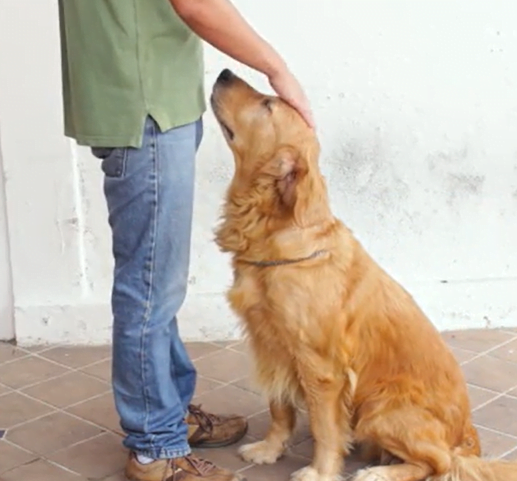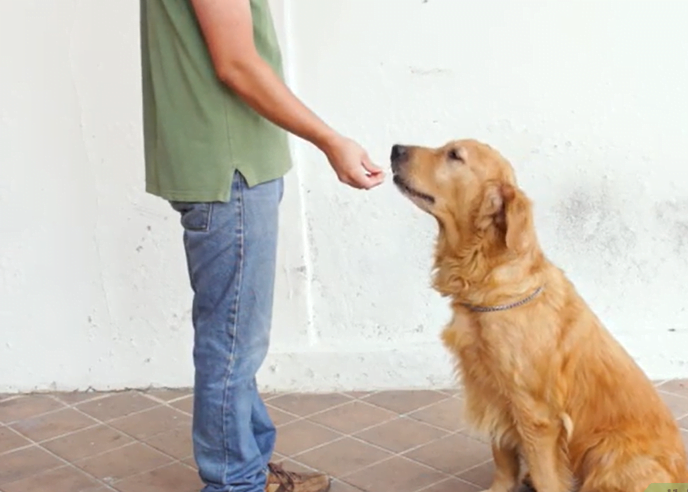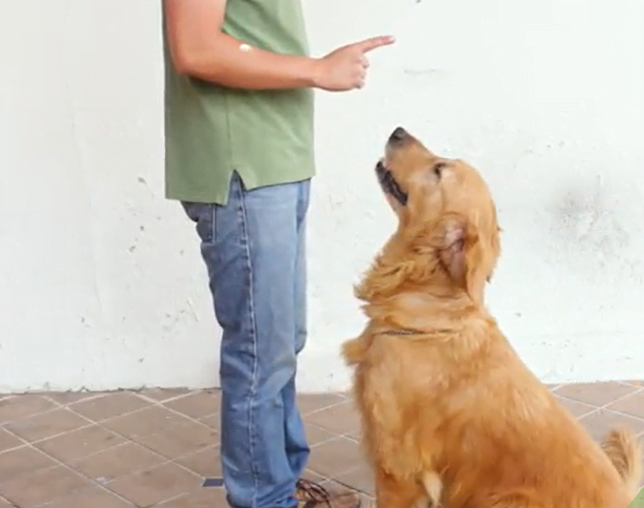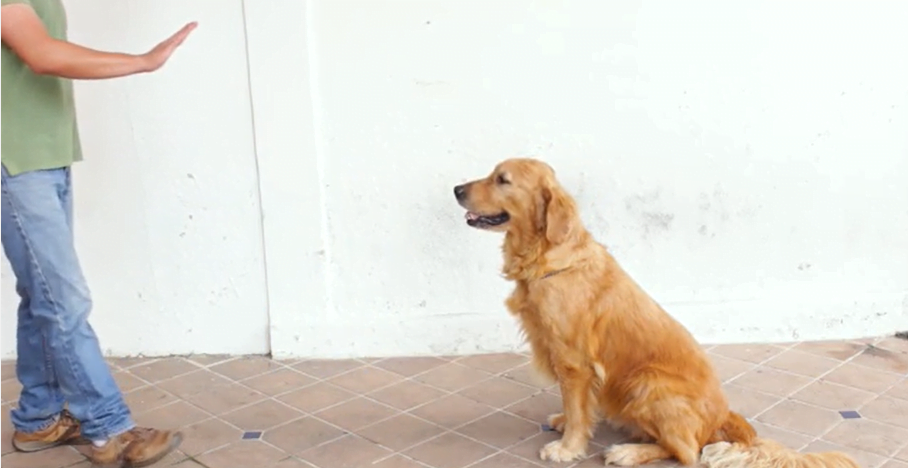The aim of teaching your dog to ‘stay’ is so they remain in a specific position until you return to them. This can be a useful behavior to teach your dog for any time you need them to stay in a certain place, for example, to help keep them out of the way whilst you are gardening or cooking!
This can be a challenging thing for dogs to learn, because we’re asking them to remain at a distance from us for an extended period, regardless of whatever distractions might be happening. That’s tricky to do, especially when we spend so much time with our dogs and teach them to come to us and pay us attention when we ask!
But every dog can learn to stay in one place, especially if training is always fun and rewarding. We do this by using reward-based training and progressing only very gradually, so our dogs can be confident at every stage….
Set your dog up for success by initially training in a quiet place like your home or garden. Ask your dog to sit (or lie down if this is easier or more comfortable for them), then reward them with a treat immediately. Encourage them to stand back up, and then repeat. This stage rewards them for the position you will eventually want them to remain in when you start moving away from them.
Ask your dog to sit and wait one second before rewarding them with a treat. Then encourage them to move about and have a brief break, before repeating. Gradually build up the time between asking them to sit and rewarding them, until your dog can stay sitting still for five seconds. At this stage, you will still be standing right next to them!

Now you can add the word “stay”. Ask your dog to sit, then say “stay” and wait five seconds before rewarding them with a treat. Then encourage them to move away and have a short break. Only say “stay” once, don’t repeat yourself as you want your dog to be able to listen after just one ask!

Gradually continue to build up the time that your dog stays sitting still. Once your dog can sit still for 10 seconds, start to make the length of time you ask them to stay still before rewarding them completely unpredictable! For example, ask for three seconds before rewarding them then letting them move, then four seconds before rewarding, then two, then five, then eight…, and so on! This means your dog won’t be able to predict how long you need them to stay still, so they shouldn’t start to get ready to move about until you have made it clear by returning to them and rewarding them.
If your dog gets up before you have rewarded them, this could mean that the length of time you’re asking them to stay still for is too long at this point, or you have been training for too long and they’re tired or getting bored. Go back to some shorter stays, then finish the session or do something simple your dog knows well and can get right! Stay positive! Showing your dog that you are unhappy may confuse them and make them worry.

Ask your dog to sit and “stay”. Just lean slightly to the side, away from them, to get them used to you moving your body away from them. Go back to your starting position and reward them. Encourage them to stand up and move around for a short break, and then repeat.
Next, ask your dog to sit and “stay” and this time move one step to the side, then return to your dog and reward them if they have remained sitting down.
Always return to your dog before you reward them. We want them to feel that the position they are staying in is really rewarding, as it always results in you returning and giving them a treat, so they won’t want to move at all! If you give the reward to your dog as you’re going back to them and they get up, you’re actually teaching them that getting up gets them the reward, so they’ll start to get up as soon as you start to return to them! Be careful to reward exactly what you want, which is your dog in the position in which you left them.
Gradually build up how far and in what direction you move. As with building up the duration, we want to be unpredictable, so for example, you might practice moving one step to the side, then two, then one step backward or on the diagonal, then four steps ahead. This variety teaches your dog that whatever direction you move away from them, they will still only get their treat reward for staying exactly in the position they were in when you said: “stay”.

You should now understand the principles and process of teaching your dog to stay, and they should be good at doing this within your home, so it’s time to take it on the road! When you start training, your dog may think ‘stay’ only means ‘stay’ inside the house or the garden, or wherever you’ve been practicing! You will need to go right back to the beginning whenever you start to train them in new places. But don’t worry, your dog will get quicker each time and will soon start to grasp the concept wherever you may be.
Build distractions in gradually by carefully choosing the locations you practice in and how busy they are, especially as it becomes much harder for your dog to stay still the more activity that is happening around them. Start in the garden, then an empty park, then somewhere where people/dogs are far away, then closer, and so on. You can use even tastier and extra special treats in locations that are particularly challenging for them!
You can also make distractions yourself. For example, can your dog stay whilst you roll a ball slowly (then gradually get faster), skip away, chat to someone else or go out of sight? The possibilities are only limited by your imagination and really help cement the concept of ‘stay’ to your dog. Remember, there is no need to rush! Building up the difficulty slowly and setting your dog up for success should mean your dog’s behavior is more reliable.

If you’ve found this page helpful, please consider leaving a small donation to help us to create more useful advice.
You can also sign up for our free newsletter for more tips and tricks, and to keep up to date with our work.
| Cookie | Duration | Description |
|---|---|---|
| cookielawinfo-checkbox-analytics | 11 months | This cookie is set by GDPR Cookie Consent plugin. The cookie is used to store the user consent for the cookies in the category "Analytics". |
| cookielawinfo-checkbox-functional | 11 months | The cookie is set by GDPR cookie consent to record the user consent for the cookies in the category "Functional". |
| cookielawinfo-checkbox-necessary | 11 months | This cookie is set by GDPR Cookie Consent plugin. The cookies is used to store the user consent for the cookies in the category "Necessary". |
| cookielawinfo-checkbox-others | 11 months | This cookie is set by GDPR Cookie Consent plugin. The cookie is used to store the user consent for the cookies in the category "Other. |
| cookielawinfo-checkbox-performance | 11 months | This cookie is set by GDPR Cookie Consent plugin. The cookie is used to store the user consent for the cookies in the category "Performance". |
| viewed_cookie_policy | 11 months | The cookie is set by the GDPR Cookie Consent plugin and is used to store whether or not user has consented to the use of cookies. It does not store any personal data. |